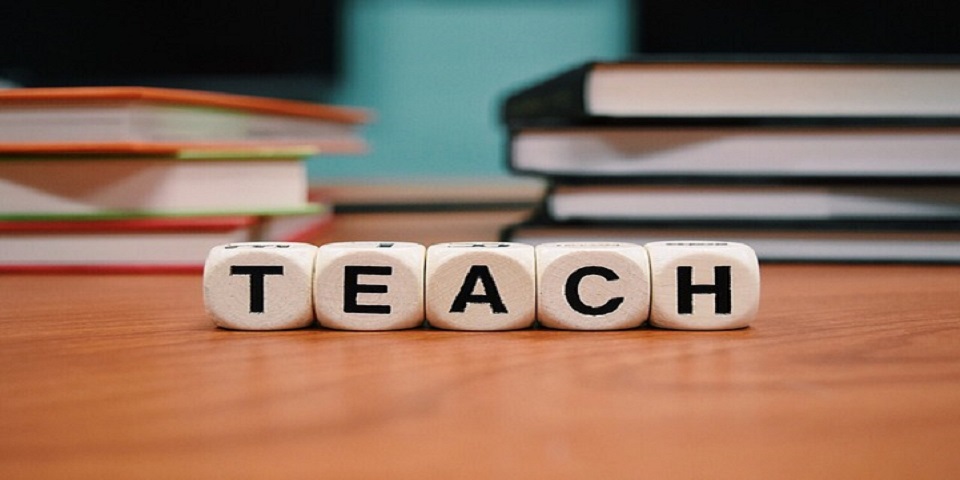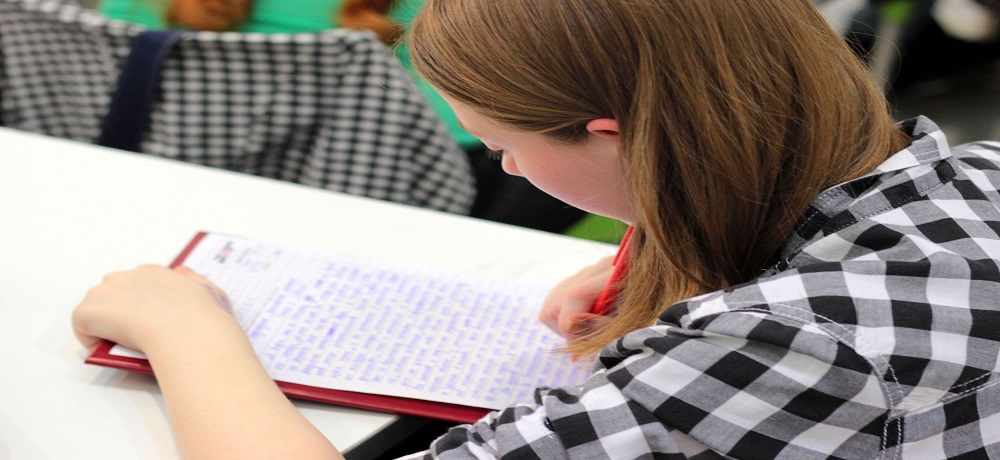This guest post is by Sanam Bozorgi, a teacher librarian at Arbor school in Dubai.
Although I am not a big fan of Harry Potter, but in book number five, ‘The Order of the Phoenix,’ there is a real interesting example of inquiry-based learning.
Unlike Dolores Umbridge’s rigid, textbook-driven approach, Harry Potter’s Dumbledore’s Army showcases the power of student-led learning.
Harry acts more as a facilitator than a traditional teacher. He encourages his peers to delve into the depth of the questions with plenty of resources to seek answers.
As a teacher-librarian who is passionate about inquiry-based learning, I always seek ways of including it within my information literacy curriculum.
It was during one of the professional developments courses that we had at Arbor, my current school, where I was introduced to the “Genius Hour”. The approach that resonated with me in several ways.
The Genius Hour is an awesome technique that makes learning even more effective and aligns remarkably well with the Empire State Information Fluency Continuum’s cycle of inquiry and learning.
The Empire State Information Fluency Continuum is designed to foster information literacy, and emphasizes stages that mirror the Genius Hour process: asking insightful questions, actively acquiring information, analyzing and synthesizing this information, creating new understanding, sharing knowledge with others, and reflecting on the learning journey.
This year, we embarked on two experiences: the question-based and the problem-based. The second experience was inspired by my recent completion of studies in design thinking for education. Design thinking is a human-centered approach that prioritizes empathy, collaboration, and experimentation, and was perfectly suited to elevate our problem based Genius Hour. Design thinking comprises five stages, which include understanding-emphasizing, defining, generating ideas, prototyping, and testing.
Our experience showed that while the question-based approach sparked curiosity, integrating design thinking with a problem-based approach during our second Genius Hour project profoundly deepened students’ learning. It encouraged them to think beyond the classroom, applying their knowledge in contexts that bridged academic learning with practical application.

Embarking on Self-Discovery
We began our journey with a crucial step which often is overlooked in traditional education: self-reflection.
Students embarked on a reflective journey, discovering their interests, strengths, and areas for growth.
This phase wasn’t just an exercise; it was eye-opening as each child realized they were the architects of their learning.
Navigating the Seas of Wonder
This step was the easiest and hardest task I could give; I asked students to write their wonderings. Anything that they wonder about. Just be origin and authentic. We called it “I wonder” step.
It was “Hard”, believe it or not. Years of structured, teacher-led questioning had left little room for creating open-ended questions.
When I saw their struggle, I demonstrated how to generate wondering questions. A technique I’ve found useful is saying my thoughts out loud. So, with each class I sat and genuinely started saying my thoughts out loud. Like: I wonder why sky is blue? Or I wonder what is the name of the artwork on the art room door? This was not an easy phase to tackle but once we got through it most of my passive learner were transformed to active seekers.
Choosing the Compass: Selecting Our Topics
Next, students had to narrow down their wonders into 4 focused inquiries.
I asked students to go back to the “Learning about me” and “I wonder “steps and review what they have written. Based off their interests they were asked to choose their 4 top ideas to explore. And as a final step they chose one of the ideas as their topic for their genius hour project. This decision involved deep discussions about feasibility, scope, and personal relevance. It was a very good practice for making balance between ambition and practicality.
Crafting Our Maps: Developing Driving Questions
Now that students had their project topics, we started creating our driving questions.
But before jumping headfirst into generating driving questions, it was important to show them what makes a “good” question. This led us to some great discussions; however, it was not enough to get them ready for creating their driving question. So, we tried various techniques and strategies but the one that was a real game changer was Question Grid. Since it was the first time for all of us using the question grid, students first practiced using the grid as a whole class with a sample topic and then they shared their questions with each other and received feedback from their peers.

The next step we took to scaffold the creation of strong driving questions was through the strategic use of question prompts and sentence starters. Both of these tools were designed to spark students’ inquiry while providing them a structured yet somewhat open-ended guides to have an idea of what questions start from.
The Expedition: Embarking on Research
This part of our journey was not just about where to look for information to answer our questions– it was learning how to look, how to discern, evaluate, and engage with information online and in print.
Our students, like many of us, initially saw Google as the gateway to all answers. But we went beyond Google to discover more advanced resources both online and in print.
Students learned to navigate academic databases, e-journals, and the collection of our own school library.
In this phase students were taught the crucial information literacy skills for their quest:
- Different Types of Sources / Organization of Information
- Navigation and Search Strategies
- Evaluation, Selection, Curation and Use of Multiple Sources
- Evaluation and Selection of Evidence within Sources
- Perspective / Point of View
- Strategies to Make Sense of Information
- Capturing Information and Thinking / Notetaking
AI: The Guiding Light, Not the Captain
With the rise of artificial intelligence, the AI tools like perplexity.ai became allies acting not as our captains but as a tool in our toolbox helping refine searches and uncover resources beyond the reach of traditional methods. However, we always remembered: AI was a tool, not the captain. The AI tools were there to enhance our discovery, not to replace the skills we were building. We used them to dive deeper into the knowledge and engage more skillfully.
Creation: The journey is the destination
During the creating phase, students utilized the information that they had compiled to create actual projects that were more than just assignments and represented both their knowledge and their creativity.
In many ways, the creation phase provided students with the opportunity to be innovators, with everyone choosing their own way to present their findings; make a PowerPoint, writing a song, making a diorama, making video,…
Creation was not the end of our journey, however. Instead, the sharing phase was what transformed individual projects into a group adventure. There was much discussion, thought, and laughter as students actively shared their projects with each other and me.
Final Notes
As we wrap up our Genius Hour journey, I would like to leave you with some key takeaways and tips on what has helped me navigate this journey through the inquiry process. Sometimes inquiry-based learning doesn’t go as smooth as designed and planned. There are many reasons behind this, and some of them include lack of engagement, difficulty with students’ organization and activities, and uncertainty with the approach to inquiry. Some key takeaways for me were:
- Create an inquiry friendly environment: We transformed one room in our library to our learning space where the walls guide the journey steps and materials were right at the hand’s reach, this added to the positive outcomes of our inquiry process.
- Embrace the pace of learning by realizing that our inquiry cannot be meaningful when rushed. even sometimes just one 40-minute library session was not enough for a step, and I had to allow the students to take their journey at their own pace to dive deep into the subject.
- Incorporate planning tools. Providing our students with individual planners has played a significant role, as they were able to take notes on their research journey, plan their activities and stages, and reflect on the process. The planning itself has been an organic part of the inquiry.
- Regular check-ins and reflections. Our teacher-student check-ins have been crucial while the students have also evaluated each other and themselves. It ensured that each student felt not only supported but also involved in the reflection on their journey.
- Cross-curricular connections. By connecting the dots between the curriculum subjects, our students have realized their interconnection, enriches their understanding. Our students also saw the relevancy of their project for the world outside of the library walls.
The impact of Genius Hour in our library sessions has been nothing short of extraordinary. It wasn’t just a lesson plan; it became a profound educational journey. Instead of dictating a curriculum, my aim was to spark curiosity in each student, allow them to explore their interests, and prepare each one of them with an essential skill of information literacy. At the core of this path differentiation, took place organically as every individual walked their unique path.




